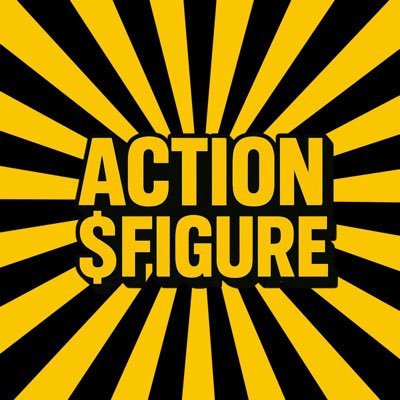KiloEx: Some of the hacker's activity addresses have been monitored, and the hacker can retain 10% of the funds as a white hat bounty
KiloEx posted on X: "With the assistance of law enforcement agencies, cybersecurity agencies, and multiple trading platforms and cross-chain bridge protocols, we have investigated and monitored some of the hacker's address activities and are ready to freeze the stolen funds at any time. To resolve this matter, we propose the following plan: return 90% of the stolen funds to the platform address, the hacker can keep 10% as a white hat bounty, and will issue a statement through social media to acknowledge cooperation and no further action will be taken."

USDD is listed on sTRX Vault and a limited-time promotion is launched
According to official news, at 16:00 on April 15, USDD officially launched the sTRX Vault minting function, opening a new channel for efficient income for users. Users can obtain sTRX income tokens by staking TRX in JustLend DAO, and deposit them in USDD Vault to mint USDD, enjoying the dual returns of JustLend DAO sTRX staking income and USDD up to 20% annualized income (APY). As a liquidity staking token, sTRX has both flexibility and continuous income characteristics, providing users with a stable value-added path. The launch of sTRX Vault further deepens the application of USDD in the TRON ecosystem, helping users to easily unlock multi-level income. At the same time, USDD launched a 30-day limited TRX Vault minting promotion. Users mint and deposit USDD through TRX or sTRX Vault to enjoy a reduction in the stability rate and have the opportunity to enjoy gas fee subsidies. In addition, the USDD x JustLend DAO Taskon event was launched simultaneously. Users only need to complete the designated tasks and knowledge quiz tests from April 15 to April 29 to share a 500 USDD reward pool.
Solana: A New Era of High-Speed Blockchain
---
Introduction
As the blockchain industry evolved beyond Bitcoin and Ethereum, developers began facing a recurring problem: blockchains were either fast or decentralized—but rarely both. That’s where Solana comes in—a network designed to offer speed, scalability, and cost-efficiency, without sacrificing decentralization.
Founded by Anatoly Yakovenko, a former Qualcomm engineer, Solana was built from the ground up with a novel design that aimed to fix the "blockchain trilemma" (scalability, security, decentralization).
---
The Vision Behind Solana
Yakovenko’s experience in distributed systems and telecommunications helped him recognize a gap in blockchain infrastructure: most chains waste time agreeing on the timing of events. His breakthrough idea was Proof of History (PoH)—a way to encode time itself into the blockchain, so everyone can agree on the order of transactions without having to talk to each other constantly.
This was the seed of what became Solana.
---
How Solana Works
Solana combines Proof of History (PoH) with Proof of Stake (PoS) to achieve consensus. Here’s a breakdown:
1. Proof of History (PoH)
PoH is a timestamping mechanism that creates a verifiable timeline of events. It acts like a synchronized clock for the entire network.
Speeds up consensus by letting validators process transactions independently and in parallel.
Eliminates the need for constant validator communication to agree on order.
2. Tower BFT (Byzantine Fault Tolerance)
Solana's version of BFT uses PoH as a reference, allowing nodes to vote on valid blocks with minimal delay.
3. Parallel Processing
Solana’s Sealevel engine allows smart contracts to run in parallel, rather than sequentially like in Ethereum. This massively boosts throughput.
4. Efficient Data Sharing
Protocols like Gulf Stream, Turbine, and Archivers ensure fast block propagation, low latency, and decentralized storage.
---
Speed and Performance
Transactions per second (TPS): Over 65,000 in theory, with real-world speeds often exceeding 3,000 TPS.
Block time: ~400 milliseconds.
Average fees: Less than $0.001 per transaction.
These metrics make Solana one of the fastest and cheapest chains currently available.
---
What Can You Build on Solana?
The Solana blockchain supports a vast ecosystem, including:
1. DeFi (Decentralized Finance)
Solana hosts DEXs, lending protocols, and liquid staking platforms:
Orca, Meteora, MarginFi, and Jito are popular apps.
Its architecture supports fast trading and low slippage.
2. NFTs and Digital Art
Solana has a flourishing NFT community. Collections like Okay Bears, DeGods, and Mad Lads gained significant traction.
Marketplaces: Magic Eden, Tensor, Solsea
3. Gaming
With zero-lag gameplay and scalable infrastructure, Solana powers games like:
Aurory
Star Atlas
Mini Royale: Nations
4. Social and Web3 Apps
Solana is pushing into decentralized social with tools like Dialect (messaging) and Backpack (wallet and identity hub).
---
Solana’s Token: SOL
Symbol: SOL
Functionality:
Pay gas fees
Stake to secure the network
Vote on proposals (in future updates)
Staking: SOL holders can delegate their tokens to validators and earn ~5–8% APY.
---
Notable Innovations and Projects
Firedancer (Coming Soon)
An independent validator client built by Jump Crypto to improve performance and reduce downtime. Expected to 10x Solana’s throughput.
Solana Mobile
With the launch of the Saga phone and Solana Mobile Stack (SMS), Solana is pioneering mobile-first Web3 experiences.
Solana Pay
An open-source protocol enabling instant, gasless payments using SOL or USDC—useful for both online and real-world retail.
---
The Challenges
While Solana is fast and efficient, it’s had its fair share of issues:
Network Outages: There have been several halts due to bugs or validator overload.
Centralization Fears: Critics argue that many Solana nodes are operated by large validators or institutions.
Developer Experience: Though improving, Solana development is more complex than Ethereum, with Rust and C++ being the primary languages.
---
Community and Ecosystem
Despite challenges, Solana has a strong and growing community of developers, artists, gamers, and crypto enthusiasts. Hackathons, DAO tools, educational resources, and global conferences (like Breakpoint) fuel its ecosystem.
---
Conclusion: Why Solana Matters
Solana is more than just another blockchain—it’s an attempt to reimagine what a blockchain can be when designed from first principles. With blazing speed, ultra-low fees, and a vibrant ecosystem, Solana is positioning itself as the foundation for the next generation of decentralized apps.
If the team can resolve stability issues and maintain decentralization, Solana could be a major player in the future of Web3, rivaling even Ethereum in user adoption and utility.
$SOL
---



 Preço mais baixo
Preço mais baixo Preço mais alto
Preço mais alto 






































